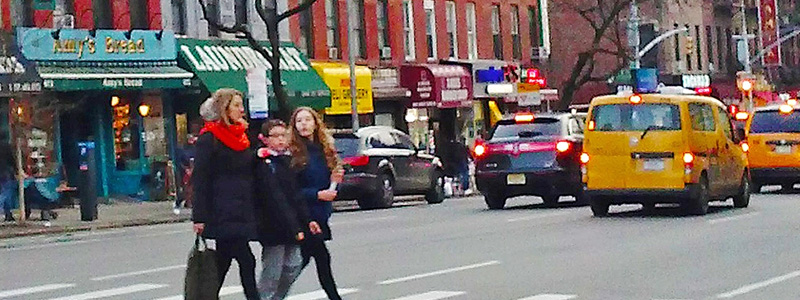Everyone knows the name, but where is Hell’s Kitchen? Discover the history of one of New York City’s best-known neighborhoods and why you need to visit.
West of Times Square is a neighborhood once renowned for sex, violence, and extortion. While gentrification has filed off its jagged edges, Hell’s Kitchen feels grittier and closer to real-life than elsewhere in Manhattan.
Between 8th Avenue and the Hudson River, from 34th Street in the south to 59th Street in the north, the city’s signature towers of glass and steel are only beginning to creep into the skyline, and shuffling queues of shutter-happy tourists and mile-wide billboards rarely choke the thoroughfares.
A Bloody Birth
The first to settle this stretch of Manhattan’s shoreline were Irish and German immigrants in the 19th century, working on the Hudson River docks, in local slaughterhouses and factories. These streets were the brawn of Manhattan; gangs swaggered through the slums and brawling was commonplace. The origins of the name “Hell’s Kitchen” are lost to time; some point to a violent hostel in the area, long since gone.
When alcohol was barred by Prohibition in the 1920s, the street gangs evolved into organized crime rackets with interests in everything from gambling and extortion to prostitution. An influx of Puerto Rican immigrants in the 1950s brought about the return of the gang violence as romanticized in West Side Story.
There’s little left to hint at this neighborhood’s tawdry and violent past. The eastern boundary of Hell’s Kitchen at 8th Avenue remains a seedy and intimidating stretch, littered with sex shops and strip bars – once a halfway house between the working class and poor to the west and the porn-peddling theatres of Times Square to the east.
Here and Now
Hell’s Kitchen of the 21st Century is a vibrant, up and coming district of the city. The leisurely menu of restaurants and bars on 9th Avenue gives the locale a similar vibe to the East Village and the Upper West Side, artistic and creative, more subdued, less rush. The residential streets connecting 9th and 10th Avenues are still spacious and airy; several blocks were protected by preservation orders in the 1970s that limited building height, although the relaxation of regulations in recent years has seen modern condominiums encroach on the low-rise skyline.
More recently, the development of derelict sites in the neighborhood has accelerated at a frightening pace. On 10th and 11th Avenue, the streets are awash with cranes and concrete and hods of fluorescent laborers drinking Schnapple on the sidewalks. While some residents lament the further loss of New York’s heritage, others are relieved that after years of neglect the area is finally receiving attention from business and developers.
There are still signposts to the past visible across the west side of Manhattan. The Landmark Tavern on the corner of 46th Street and 11th Avenue stood on the shores of the Hudson River during the 19th Century, serving gangs of burly Irish dockworkers. Although the bar is now several hundred yards from the river (landfill from construction has been used to extend the island’s coastline over the decades) its appearance has changed little, save for the occasional plasma screen.
While every New Yorker knows where Hell’s Kitchen is, don’t expect to find its location in print. The yellow-bordered map in the back of cabs refers to the area as Clinton while the MTA Subway map refuses to name it. Developers and City Hall have pushed for a more sellable designation since the 1950s, and although it’ll always be known to those in the neighborhood as the devilish Hell’s Kitchen.

